 Home
HomeRomania info
 Cities of
Cities of  Romanian guide
Romanian guide Flights to Romania
Flights to RomaniaMini tours
 City tours
City tours Weekend in
Weekend in All our tours
 Our tours in
Our tours in Romania tours to
Romania tours to Tour Dracula
Tour Dracula Mini tour Dracula
Mini tour Dracula Tour from the
Tour from the Tour between
Tour between  Gastronomic and
Gastronomic and  Transylvania tours
Transylvania tours
 Honeymoon in
Honeymoon in  Medieval
Medieval Medieval
Medieval  Tour in the heart
Tour in the heart  Horseback riding
Horseback riding Luxury weekend in
Luxury weekend in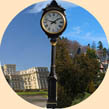 Weekend
Weekend Contacts and travelers opinions
 Contacts
Contacts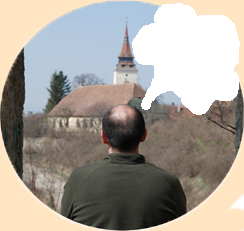 Our customers
Our customersDifferent items and services
 Tourist services
Tourist services  Our Blog
Our Blog Photos for sale
Photos for sale Friend links
Friend links
Alba Iulia
On the banks of the Mures River is the city of Alba Iulia (known in ancient times as Balgrad or White City, in German as Weißenburg and in Hungarian as Gyulafehérvárin). Many written testimonies (and discovery of archaeological) attest the presence of settlements in the area since the Neolithic period (5000-1900 BC). Alba Iulia offers to the tourists a wonderful old town: Cetatea (Citadel), the real heart of the city designed by the Italian architect Giovanni Morando Visconti, Visconti and built between 1715 and 1738 with the help of nearly twenty thousand serfs. The Citadel has the characteristic of being made in the shape of a seven-pointed star designed by Marshal Vauban, Louis XIV's engineer. Almost all of the tourist places are within the walls, on Mihai Viteazul street. The main tourist sights are: the Reunification Cathedral in greek-orthodox style, the Catholic Cathedral built in grey stone and with a truly impressive interior, the Episcopal Palace (dating from the seventeenth century), the Royal Palace (here lived the Royal of Hungary at the time when Alba Iulia was its capital while later was the residence of Mihai Viteazul, the Prince of Wallachia who united the regions of Moldavia, Transylvania and Wallachia from 1600 to 1601) and the Muzeul Unirii Alba (Museum of the reunification).
Fundamental in the history of Romania is the date of December 1 1918 when the act of unification between Romania and Transylvania was signed and to celebrate this event was built the Reunification Cathedral after World War I, while in 1922 was crowned as King of Romania Ferdinand I (Ferdinand Viktor Albert Meinrad of Hohenzollern-Sigmaringen), able to sign the entry of Romania into the war against his native homeland, Germany.
Pictures of Alba Iulia
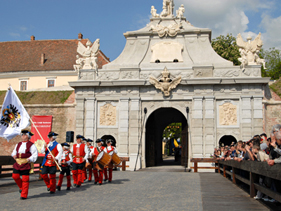 changing the guard
changing the guard
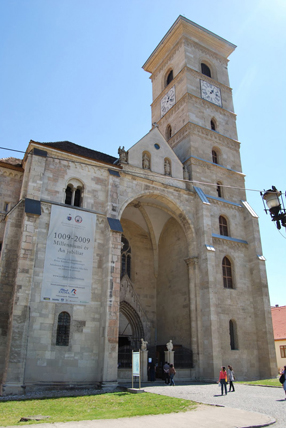 Catholic Cathedral
Catholic Cathedral
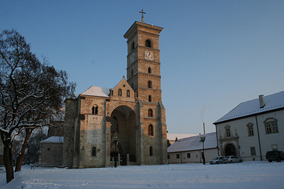 Catholic Cathedral
Catholic Cathedral
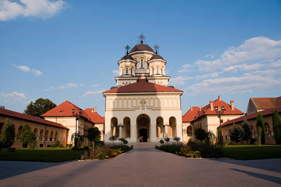 Reunification Cathedral
Reunification Cathedral
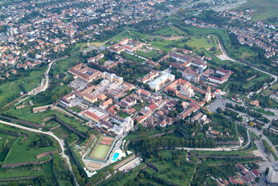 Alba Iulia from high;
Alba Iulia from high;
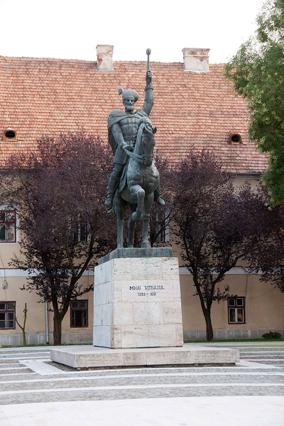 Mihai Viteazul
Mihai Viteazul
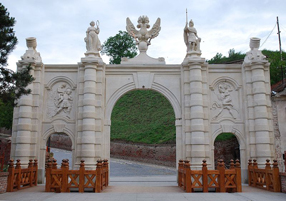 Monumental door
Monumental door
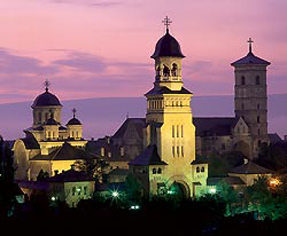 Evening visit of Alba Iulia
Evening visit of Alba Iulia
